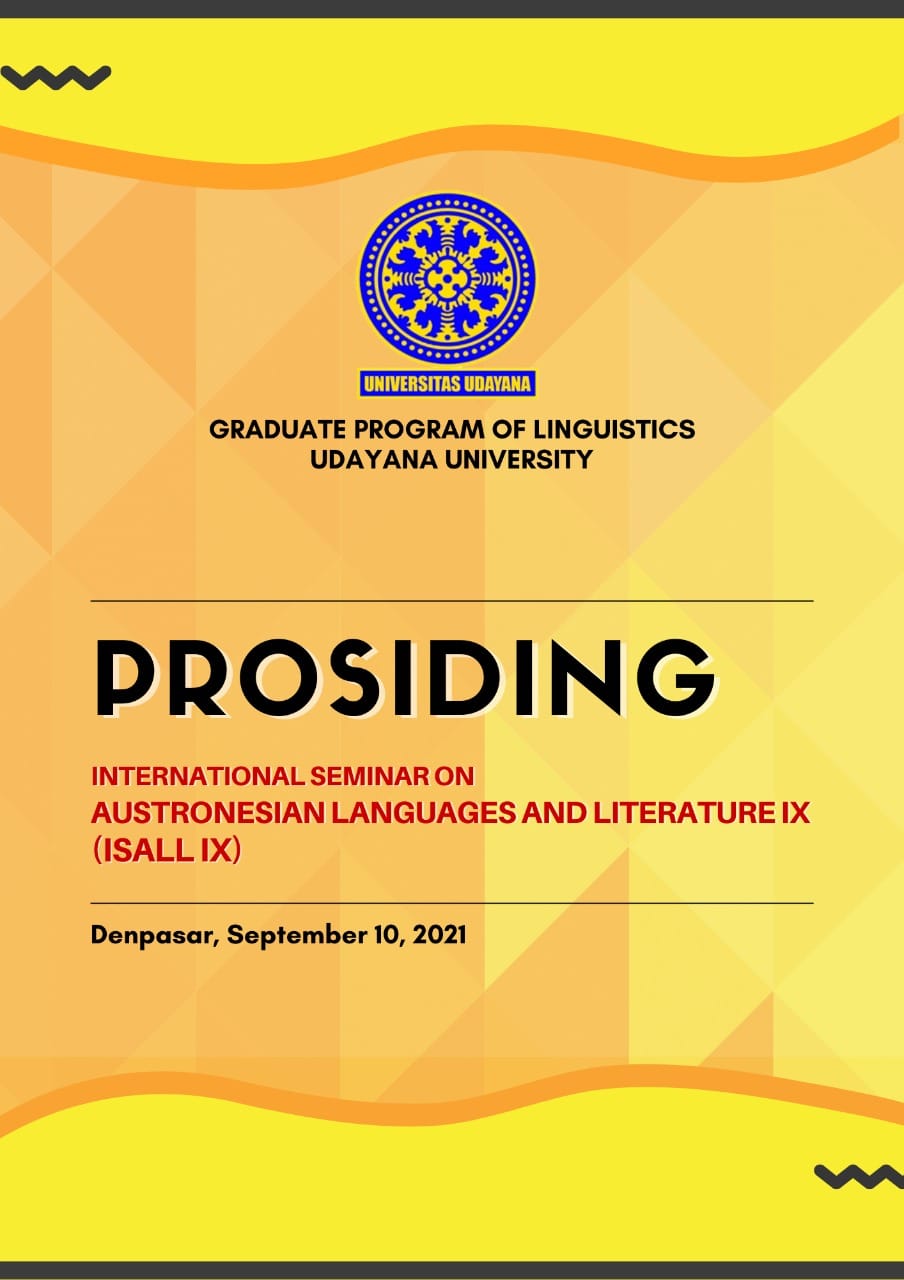Translation Comparison on Manual Product and Machine Translation
Abstract
This paper is aimed at describing the comparison of translation products. The products of translation are from bilingual user manual guidance and translation machine. User manual guidance for a product is commonly written in two languages, Indonesian and English. A product user manual guidance is mostly written in English and it must be supplied in Indonesian language for avoid misinterpretation of guidance. The English version is then compared with the result of translation machine. Those two versions of English are totally different since it is assumed that the user manual guidance of a product is written by human. While, the translation machine is non-human tool that applies artificial intelligence to translate other languages. It is interesting to compare the product of translation with different background of translator. The data source was taken from bilingual user manual product and translation machine. The data for this paper was in the level of words and phrases, but it was in the level of sentence to avoid misunderstanding of context. Method of documentation was applied during the data collection. It was supported with technique of reading attentively, note taking, and qualifying the data. The similar technique was also used when dealing with translation machine. Meanwhile descriptive qualitative was applied in analyzing data. Findings show that several words and phrases are applied differently in the user manual product and translation machine. Certain lexical choices are used differently in terms of general or specific understanding in the manual product and translation machine. There is also phenomena of additional information for the result of translation machine. It is also occurred in for phrases. Phrases are applied differently in the user manual product and the translation machine. Even the words and phrases are applied differently, however, the meaning is considered to be the same with the Indonesian version.
References
Irfan, Muhammad. (2017). Machine Translation. Diambil dari https://www.researchgate.net/publication/320730405 [diakses pada 11 November 2020].
Nadhianti, Melita. (2016). An Analysis of Accuracy Level of Google Translate in English – Bahasa Indonesia and Bahasa Indonesia – English Translations. Skripsi. English Education Department Faculty of Languages and Arts Yogyakarta State University, Yogyakarta.
Okpor, M.D. (2014). Machine Translation Approaches: Issues and Challenges. IJCSI International Journal of Computer Science Issues, Vol. 11, Issue 5, No 2, September 2014, hal. 159 – 165.
Zakir, H. Mohamed and Nagoor, M. Shafeen. (2017). A Brief Study of Challenges in Machine Translation. IJCSI International Journal of Computer Science Issues, Volume 14, Issue 2, March 2017, hal. 54 – 57.


